 no that probably won’t work
no that probably won’t work
so you only need low voltage protection, and the MCU/node itself with a fet can’t switch itself off ?
 no that probably won’t work
no that probably won’t work
so you only need low voltage protection, and the MCU/node itself with a fet can’t switch itself off ?
Possibly, but that would require more than just a MOSFET. Should be something flipflop-like that is able to switch off power to MCU and sensors when explicitly triggered by signal from MCU, but must also be able to survive (not switch off) during MCU deepsleep (cycles) and use very little power.
(I have not seen examples for this yet.)
Based on your link I was able to find 2 (max 2A) boards.
They draw up to 5 uA, which is a pity for low-power applications.
(Not sure if that is quiescent current or usage at max load.)
you could use this tpl5110
https://github.com/sparkfun/SparkFun_TPL5110_Nano_Power_Timer/blob/master/Documentation/tpl5110.pdf
Once configured in timer mode (EN/ONE_SHOT= HIGH) the TPL5110 periodically sends out a DRV signal to a MOSFET to turn on the µC. If the µC replies with a DONE signal within the programmed time interval (tDRV) the TPL5110 turns off the µC, otherwise the TPL5110 keeps the µC in the on state for a time equal to tDRV.
The TPL5110 can work also in a one-shot mode (EN/ONE_SHOT= LOW). In this mode the DRV signal is sent out just one time at the power on of the TPL5110 to turn on the µC. If the µC replies with a DONE signal within the programmed time interval (tDRV) the TPL5110 turns off the µC, otherwise the TPL5110 keeps the µC in the on state for a time equal to tDRV.
Not sure how that could be used to implement “keep (always) on until explicitly instructed by MCU to keep always off” (while surviving MCU deepsleeps).
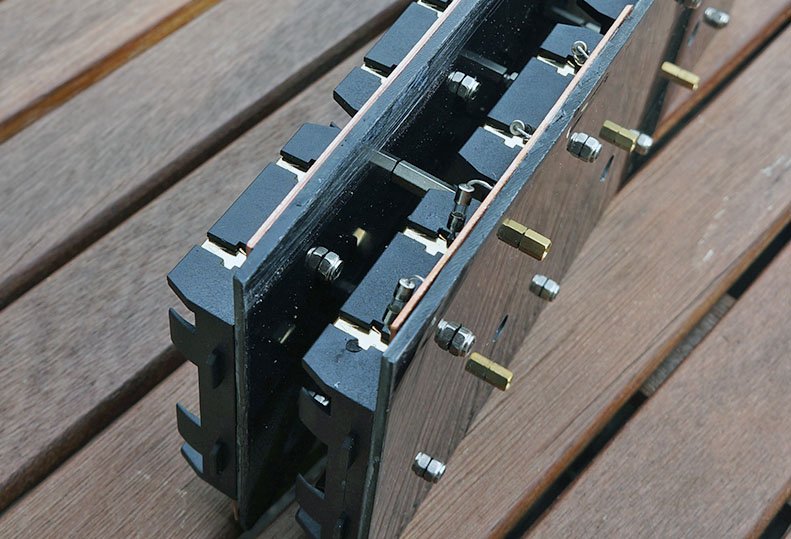
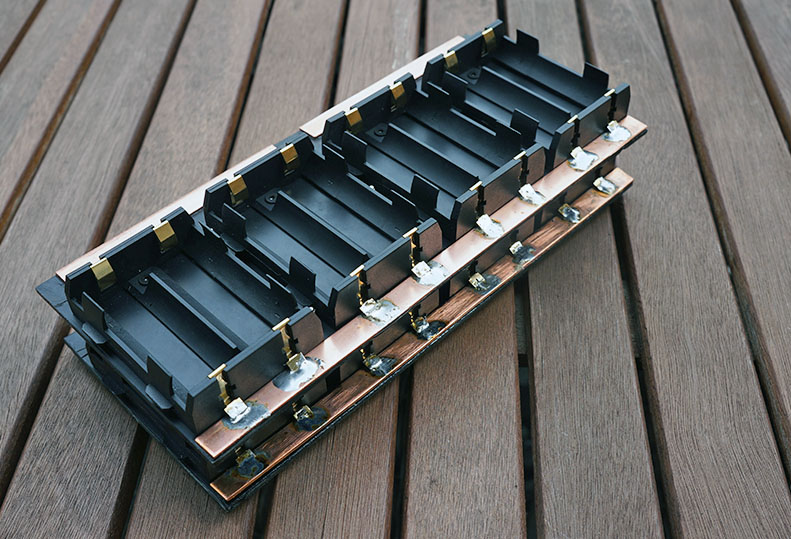
slowly getting there … 16 x 26650 in one ‘unit’
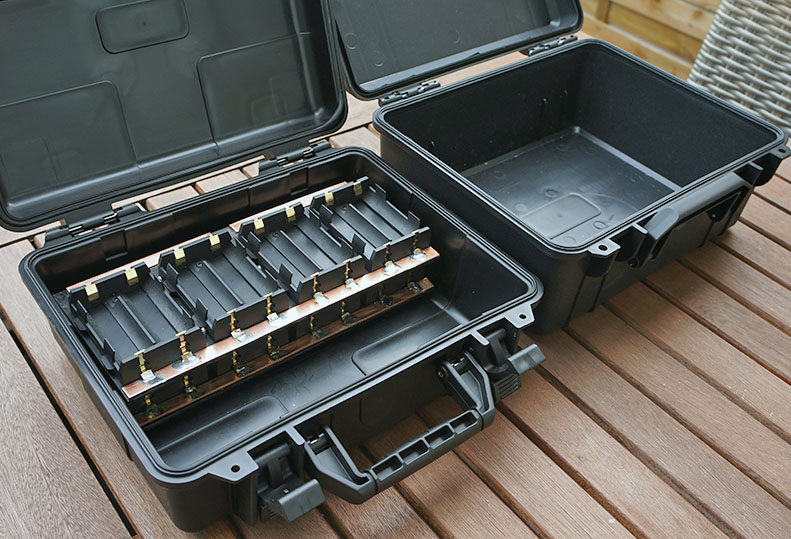
will use the higher case because of ventilation / controlpanel(s) in lid
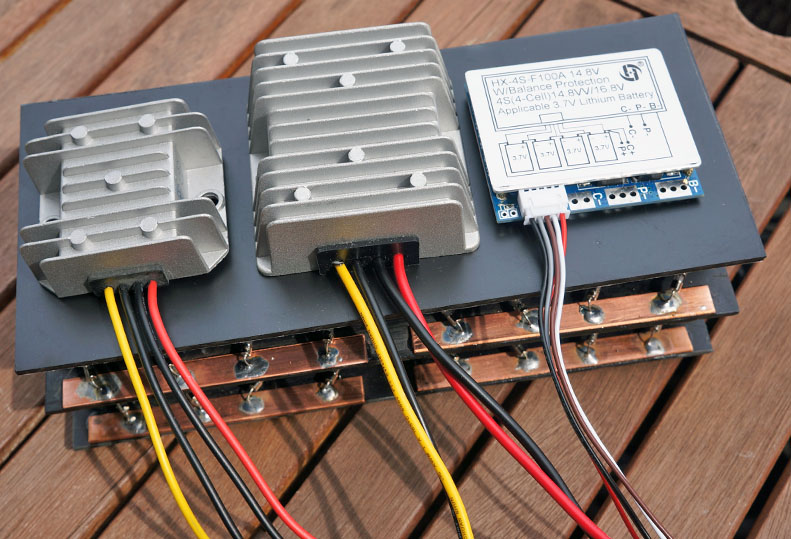
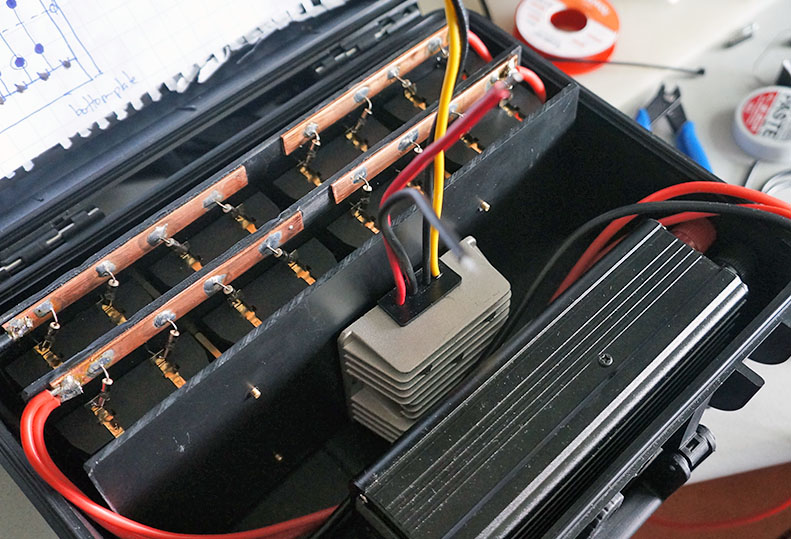
If your goal is to switch off the node when a certain battery level is reached (let’s say 2.7 v) you have 2 options: that measurement is done by the node itself or by an external circuit connected to gpio .
That is not related to the MCU’s sleepmode imho.
When the nodes wake up, first thing is to check the state of the battery… if its to low (be it its own measurement or the external circuit gpio signal) it won’t transmit, it can check again after x cycles for example … still to low it won’t come on again… ever.
But make sure that long before reaching that point your node send out an 'low power alarm) it can even be calculated So it won’t be a ‘supprise ! no power left’ 
Sure but if such low-power message is ignored (for whatever reason) power should be switched off automatically to protect the battery. Just like Li-ion cells with built-in protection automatically switch off to protect the battery, when voltage is below a certain threshold.
if the external or internal voltage measurement decides that the level is to low to transmit and switches itself off, then there is no longer ‘danger’ because there won’t be any current flowing and the voltage won’t drop any further.
Anyway… we’re protecting a 3 euro battery So I don’t see the point in this ‘overprotection’
Signalling on time that the level getting low is key imho, like your fueltank 
Bit more too it though is there not ?
If abused too often that 3 euro battery could burn down a shed, house, school etc.
I had a LiPo catch fire in my worshop whilst being charged, fortunately it was on a stone tile so the flames did not spread.
No not really.
We are talking about ifepo4 3.2 v 600mah 14500… these have a different chemical composition then the Lithion Ion (18650) you mentioned.
They are much more safer because they have a lower energy density and the discharge voltage is 2.8 v.
Combine that with the very low currents we use for nodes and I say that a simple fet switch can turn this node off at 3 v… no problemo.
Another point is that the nodes are so low power… why use rechargeable batteries at all ? its uneconomic, the (very near) future is ZERO batteries ![]()
Oh, if ita LifePo4, I would not worry so much.
But there is lots of stuff suggestion Lithium Ion in the thread, so easy to get confused.
Where do you get a 600mA LifePo4 for 3 euro ?
If you see the pictures I’ve posted above, then you understand that safety is really important to me.
I use car relais and thermal switches, normal fuses and battery management systems to keep everything safe 
An MCU that measures battery voltage is drawing power, if it decides not to transmit it will use less power but it still draws power, meaning that battery voltage will drop further, just slower. If it goes to sleep it will wake up again and measure battery voltage again, unless the battery is completely drained (and/or below minimum required low voltage level for the 3.3V components used).
For the advertised capacity the LiFePO4 discharge curves usually go down to 2.0 V.
So for 3.3V components it will be difficult/impossible to use their full capacity.
(I managed to send some messages with ESP8266 below 2.4V though.)
They have lower energy density but that is not the essence of why they are safer.
No a ‘simple’ MOSFET switch will not do. Keeping the MCU and sensors constantly powered off when battery level is below some threshold needs additional logic. See my above posts.
Not all nodes are LoRa nodes (even while the forum name may tempt to think so). Have some LoRa agnostic LiFePO4 powered ESP8266 (weather) low-power nodes here that use more power than most LoRa nodes (low is relative). ![]()
Where do you get a 600mA LifePo4 for 3 euro ?
No, because when the MCU decided the battery is (almost) empty it switches itself of, not drawing anything
that you can set in your software … normally
an empty battery won’t charge itself and the node (if not solar) stays switched off… yes, CONSTANTLY powered off ![]()
wordgames, not in the mood… you 'win
ah you want me to look in Ali’s shop for you ?
Less than €2.45 actually (per 4).
https://www.aliexpress.com/item/32807045241.html
Are not 700 mAh but more like 550 mAh
See test at lygte.dk
“With protection” but no discharge low voltage cutoff protection.
@borroz Ah, you were first. ![]()
I bought a set there.
![]()
No winning, no word games but facts and real life LiFePO4 14500 endurance tests with my ESP8266 weather nodes. Lasts 1+ month on a charge. Measuring temperature, humidity, barometric pressure and light intensity (3 sensors) and sending updates via MQTT over WiFi every 10 minutes.
When I do not monitor/check low batt messages every day its easy that a battery gets drained below 2.0V (down to 0V) for more than a day. Not good for the batteries.
When at 0V the charger does not accept them as LiFePO4 (then need to revive them by CC charging with lab power supply for a while until they contain some charge again, after which the charger will accept them again).
After battery reached 3.07 V the node worked for another 3 days, down to 2.34 V.
Was a known fact when I ordered (see test at lygte.dk).
They at least somewhat approach rated capacity, and more important these can be re-charged. ![]()